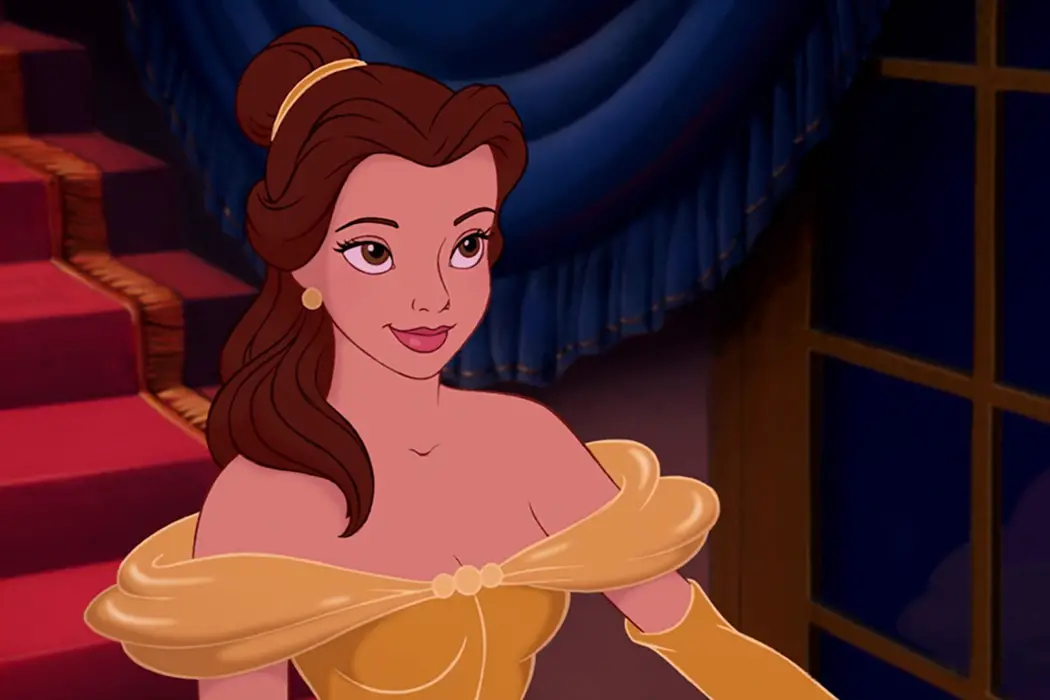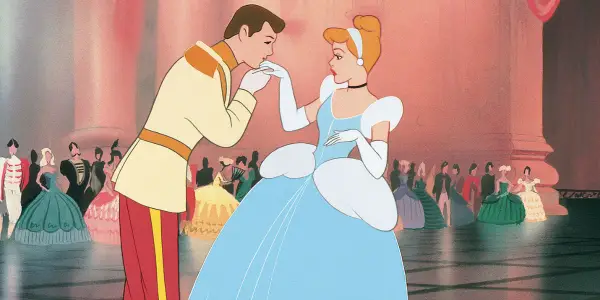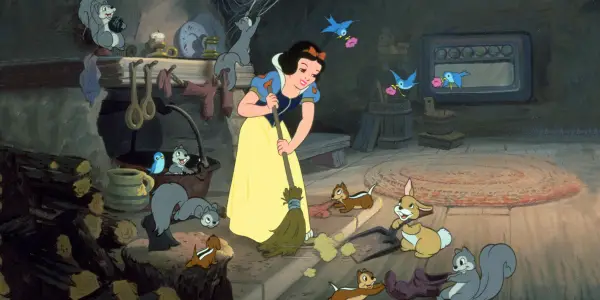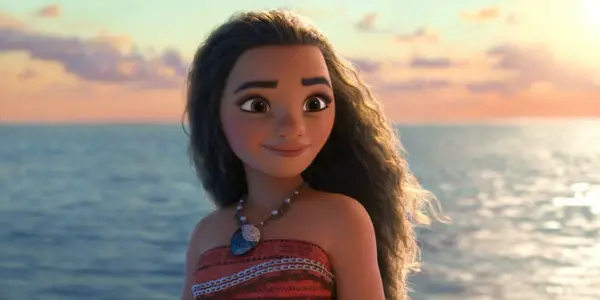The Evolution Of The Disney Princess

Jo is 21 years old, studying film and theatre at…
Film is a highly influential cultural medium, and has major influence in the empowerment or disempowerment of women. Pop-culture entertainment, led by cultural giant Disney, not only reflects what audiences want to see, but it also sets standards of acceptable behavior that are followed around the world.
Those who recently stormed the cinemas to see the latest in the Disney Princess canon would have been pleasantly surprised when comparing Moana with, say, Sleeping Beauty. For more than sixty years, Disney has been hugely influential in dictating to children the idealised characteristics of men and women. As a film production company, Disney and their famous princesses have changed significantly as a response to, and a reflection of, changing social norms.
Moana, and her non-boyfriend, Maui
Moana, an ancient Polynesian tale of empowerment and discovering your own identity, plays on a well-worn storyline with some small but significant differences. Moana is the daughter of the island chief, and due to inherit leadership upon coming of age. When her island is dying because of an ancient curse, she alone sails out on a quest to save the day.
She is aided by demi-god Maui, who, although male, is emphatically not a love interest. Because, as Hollywood is starting to realise, when a girl is saving the world, she doesn’t need to fall in love with every man that walks onto screen. Axing the romance plotline is a significant step for Disney scriptwriters. Up until Moana, a marriage, or at least a romance, was mandatory for Disney Princesses.

Breathing air and finding love: mandatory Disney plot-points
It was only 1989 when young girls were taught to prioritise beauty over brains as “it’s she who holds her tongue who gets a man”. This has slowly shifted, in Tangled the marriage is implied, not a major plot point, and in Frozen, true love is sisterly, not romantic. This is in stark contrast with Snow White, Cinderella, Sleeping Beauty and The Little Mermaid, where the narrative revolves around the attainment of ‘true love’ and in turn, a husband.
In an essay entitled Child Maltreatment in Disney Animated Feature Films an interesting character trend was found. It noted that the girls are more often shown asserting themselves against parents (as in The Little Mermaid, Mulan, Aladdin, Tangled, etc) than princes. It seems the narratives are keen to tap into typical teenage angst, but as soon as these girls enter womanhood, they are resigned to subservience in their marriage.
The impact of social context on the princesses’ characters
The plot direction of these Disney movies is also reflective of the personal characteristics and traits embodied by these women. The first three Disney Princess movies, Snow White, Cinderella and Sleeping Beauty, were made from the 1930s to 1950s. It’s therefore no surprise they personify the traditional housewife stereotype, propagated by the domestic containment theory of the 50s. These women are obedient, taciturn, lack initiative and thrive on housework.

In the next movies, The Little Mermaid and Beauty and the Beast, there are signs of the girls developing some intelligence, but a clear emphasis on their physical appearance. Some character traits are admirable, but the plot still reduces their personality to a plot device used to attain a husband. Ariel is curious about her world, yet is willing to sacrifice everything for a man she just laid eyes on. Belle is intelligent, but socially alienated because of it. She loves the Beast despite his emotional abuse. And, as the film’s name establishes, she is still above all valued for her beauty.
From 1992, Disney finally caught up with society, and the next four films featured princesses of culturally diverse backgrounds. This cultural progressiveness is also accompanied by deeper character development.
Pocahontas, Mulan and The Princess and the Frog all feature hardworking, assertive, independent women. Jasmine’s character is less developed, but then again, it isn’t her movie. In adapting a ‘classic fairy tale story’ with an archaic female character-type and boring plot, Tangled was a step back. Yet with Brave and Moana, the girls have enough spunk to compensate for that uninspiring regression.
Diversity, finally! Is it too good to be true?
By 2016 we’ve had movie princesses that are Arabian, Native American, Chinese, African-American, Scottish and Polynesian, with a Latino princess on Disney Junior TV.
The representations have been by no means perfect. It seems that every attempt by Disney to explore a non-Anglo-Saxon culture comes with a large list of cultural and historical inaccuracies that propagate offensive stereotypes. For example, historians have long been irritated by the reappropriation of the story of Pocahontas (who was actually twelve years old) and Mulan.
Aladdin, set in approximately 9th century CE, features extremely revealing, sexualised clothing in comparison with cultural norms (not to mention a slew of racist stereotypes about Arabians). With a company as large as Disney, criticism, and pedantic scrutiny of historicity and political correctness, is inevitable. The validity of these many critiques varies, yet it is interesting to note.
Recently, The Princess and the Frog, although noteworthy for the first black princess, got criticised for everything from the insensitive setting, racist character names, and non-black prince. Some race scholars even aired the interesting observation that housework and cleaning, not done by Disney Princesses since Sleeping Beauty, makes a resurgence with the first black princess.
Moana, in cinemas now, has admirably strived for historical accuracy with directors Musker and Clements recruiting a group of cultural advisors known as the ‘Oceanic Trust’. This consisted of “a group of anthropologists, cultural practitioners, historians, linguists, and choreographers from islands including Samoa, Tahiti, Mo’orea, and Fiji” who were rigorous in their critique of Moana. The majority of the cast is of pacific-islander descent, the story is rooted in pacific mythology and features songs written by Samoan musician Opetaia Foa’I and sung in Polynesian by the Te Vaka group.

Not just a stick figure: the changing female form
Moana’s physical appearance reflects a small but positive step in Disney promoting more variation in the body shapes of their princesses. Moana, unlike the wafer-thin Frozen princesses, has strong legs with curves because, like Mulan, she’s on a quest of physical endurance. Co-Director Musker said “We wanted this action adventure heroine… that could really believably carry all that stuff… and take charge and command a boat across the ocean. That she wouldn’t be knocked over in those mighty oceanic breezes.”
This shift in perceptions of beauty is important, as for a long time Disney films encouraged the ideal that overweight people are ugly, unmarried and hostile. Think of Ursula from The Little Mermaid, the mean matchmaker in Mulan, the Beast from Beauty and the Beast, and Governor Ratcliffe from Pocahontas. Sure, there are some body-positive characters, but they’re never worthy of main character status.
With Lily James’ controversially tiny waist in the recent live action Cinderella, and the subsequent casting of the slim Emma Watson for 2017’s Beauty and the Beast remake, it seems unlikely that this trend is changing rapidly.
What next?
So where is Disney Princess heading to from here? With the commercial success of live-action remakes Cinderella and The Jungle Book, Disney has already signed off on remakes of Mulan and The Little Mermaid, with Beauty and the Beast hitting cinemas March 23rd. On a non-princess note, other live action remakes/spin-offs coming include The Lion King, 101 Dalmatians and Mary Poppins Returns.
The co-directors of Moana have stated that an LGBT princess could be on the cards in the future, but given the eighteen remakes planned in the next few years, it’s unlikely to be coming any time soon.
Conclusion
For generations, Disney films have forged childhood memories, and implicitly and explicitly taught everyone- children and adults alike- how to live. Their exponential financial success means that for years to come, they will continue evolving their idea of ideal human relationships. Soon, we can look forward to our favourite movies reflecting the tangled complexities of human nature- regardless of gender, race or sexuality.
Which Disney Princess do you think has been the best role model, and why?
Does content like this matter to you?
Become a Member and support film journalism. Unlock access to all of Film Inquiry`s great articles. Join a community of like-minded readers who are passionate about cinema - get access to our private members Network, give back to independent filmmakers, and more.
Jo is 21 years old, studying film and theatre at university in Sydney, Australia. She has been writing about movies since 2015 on her website scribblesofstageandscreen.com and has written for AussieTheatre.com, Blitz UNSW and Film Inquiry. She is currently the sub-editor of UNSW Tharunka Magazine. Her favourite movies include The Intouchables, Oceans 11, Chicago and The Grand Budapest Hotel. She is a proud supporter of Australian film, any movie that passes the Bechdel test, and any movie with Cate Blanchett in it.













